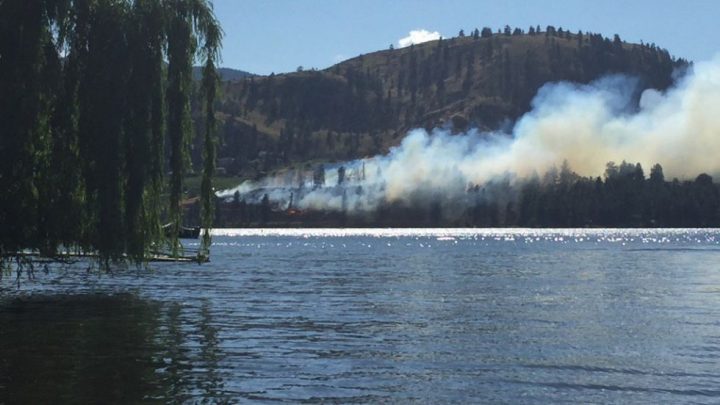Wildfires have been spreading throughout Canadian province British Columbia ever since July 8th. The fires have displaced many people from their homes and have caused a number of mining and forestry companies to either decrease operations or stop them altogether. There are currently more than 14,000 people being ordered to evacuate their hometowns or cities as firefighters frantically fight more than 231 wildfires that has spread throughout around 320 square kilometres of the province.
The fires, still raging through BC’s interior, have worsened overnight and remains out of control Now, on the morning of July 11, the fires is close to seriously threatening Kinder Morgan’s (NYSE:$KMI) Trans Mountain pipeline.
The pipeline, which transfers about 300,000 barrels of crude and/or refined oil a day from Alberta to Vancouver for export to the United States, passes through one of the regions that is currently affected by the wildfires. Kinder Morgan has informed Bloomberg that they are currently watching the threatened area closely as well as taking preventative actions in order to ensure safe operations.
Besides the fires possibly threatening operations at Kinder Morgan’s pipeline, two mining companies — EnGold Mines (TSX-V:$EGM) and Imperial Metals (TSX:$III) — already stopped its operations on July 10th due to the wildfires.
EnGold Mines has temporarily stopped all its explorations located in BC while Imperial Metals’ have largely reduced operations at its Mount Polley copper mine because many of its employees live in the Williams Lake area, where the fires have spread.
Following news of worsening fires, Environment Canada has released air quality advisories on July 11th from west of Edmonton all the way to the Alberta-B.C. border. This includes those surrounding or living at Hinton, Rocky Mountain House, Whitecourt, Spruce Grove, and Jasper National Park. Environment Canada also warned that some places across the Canada-U.S. border — like where you cross to Washington and/or Montana — could also experience some smoke drift.
FireSmoke Canada has released an interactive map that shows heavy smoke moving from around the central and southern part of Alberta to southern parts of Saskatchewan and southwestern parts of Manitoba.
B.C. Wildfire Services have also released an interactive chart that shows all current active fires — including notes of the 17 fires that could threaten public safety.
B.C.’s current wildfire situation reminds many of the fires that raged through Alberta’s Fort McMurray just last year. The fires forced many companies to stop their operations and caused a $1 billion loss in the area’s planned capital spending in 2016.
Featured Image: Nanaimonews.com/John W Skinner










